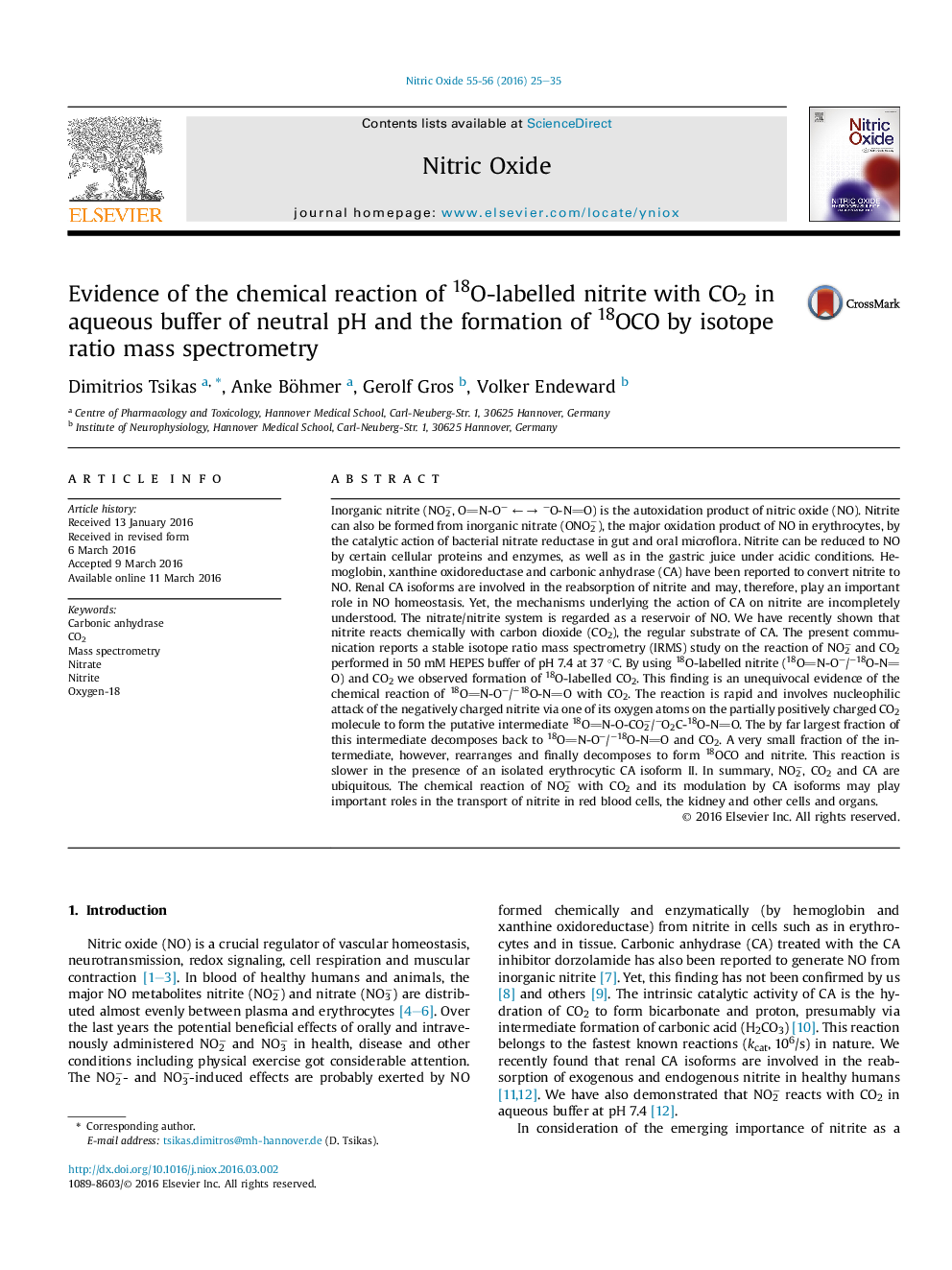| Article ID | Journal | Published Year | Pages | File Type |
|---|---|---|---|---|
| 8344889 | Nitric Oxide | 2016 | 11 Pages |
Abstract
Inorganic nitrite (NO2â, ON-O- ââ -O-NO) is the autoxidation product of nitric oxide (NO). Nitrite can also be formed from inorganic nitrate (ONO2â), the major oxidation product of NO in erythrocytes, by the catalytic action of bacterial nitrate reductase in gut and oral microflora. Nitrite can be reduced to NO by certain cellular proteins and enzymes, as well as in the gastric juice under acidic conditions. Hemoglobin, xanthine oxidoreductase and carbonic anhydrase (CA) have been reported to convert nitrite to NO. Renal CA isoforms are involved in the reabsorption of nitrite and may, therefore, play an important role in NO homeostasis. Yet, the mechanisms underlying the action of CA on nitrite are incompletely understood. The nitrate/nitrite system is regarded as a reservoir of NO. We have recently shown that nitrite reacts chemically with carbon dioxide (CO2), the regular substrate of CA. The present communication reports a stable isotope ratio mass spectrometry (IRMS) study on the reaction of NO2â and CO2 performed in 50 mM HEPES buffer of pH 7.4 at 37 °C. By using 18O-labelled nitrite (18ON-O-/â18O-NO) and CO2 we observed formation of 18O-labelled CO2. This finding is an unequivocal evidence of the chemical reaction of 18ON-O-/â18O-NO with CO2. The reaction is rapid and involves nucleophilic attack of the negatively charged nitrite via one of its oxygen atoms on the partially positively charged CO2 molecule to form the putative intermediate 18ON-O-CO2-/-O2C-18O-NO. The by far largest fraction of this intermediate decomposes back to 18ON-O-/â18O-NO and CO2. A very small fraction of the intermediate, however, rearranges and finally decomposes to form 18OCO and nitrite. This reaction is slower in the presence of an isolated erythrocytic CA isoform II. In summary, NO2â, CO2 and CA are ubiquitous. The chemical reaction of NO2â with CO2 and its modulation by CA isoforms may play important roles in the transport of nitrite in red blood cells, the kidney and other cells and organs.
Related Topics
Life Sciences
Biochemistry, Genetics and Molecular Biology
Biochemistry
Authors
Dimitrios Tsikas, Anke Böhmer, Gerolf Gros, Volker Endeward,
